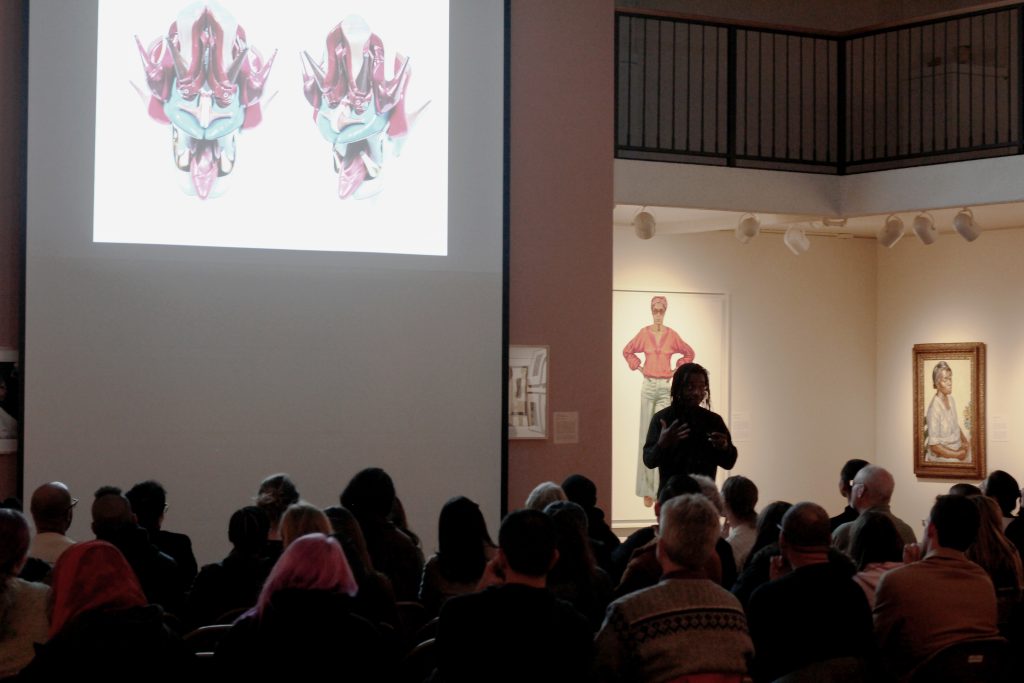Artist and sculptor Willie Cole filled the seats of the Binghamton University Art Museum with curious listeners on Thursday while detailing his work and life as a contemporary creator, the latest installment in the BU Art Museum’s season-long exhibition, “not but nothing other: African-American Portrayals, 1930s to Today.”
While Cole has utilized a variety of techniques throughout the course of his career, he is best known for his work with steam irons, which he began to experiment with in 1980. While walking the streets of Newark, New Jersey, where he lived at the time, he discovered an iron that had been hit by a car. Cole brought it back to his studio, and through taking hundreds of photos of the iron, he began to connect it to his life and personal experiences.
“It began to reveal things to me,” Cole said. “Things about myself, about my family and just about our country and our world in general.”
Cole’s interpretation of the iron was a meditation on black identity in the United States, and how the ongoing legacy of slavery shapes racial experiences. For Cole, the colors of both sides of an iron are representations of America’s exploitation — the black branding side as a stand-in for race, the silver handle as a stand-in for money. Cole showed a chart he created to document his connections, tracing a line between modern white wealth to the invasion of Africa and the capture of slaves. For Cole, these connections all trace back to the original object.
“It became like an equation where everything there led me to something about the iron,” Cole said.
According to Cole, working in the 1980s left him keenly aware of the idea of branding in a capitalist sense. Referencing the importance of names such as Gap or Calvin Klein, he saw a connection between these “brands” and the physical act of branding that he sought to perform with an iron.
To show the connection between his work and the African American experience, Cole referenced a 1997 work he created known as “Stowage,” in which 12 smaller iron markings on plywood surround a larger one. The 12 small irons represent different tribes in Africa, while the centerpiece is a reference to the ships that carried slaves to the United States like stowed cargo.
While Cole is best known for his prolific iron work, which led him to adopt the nickname “Willie the Scorch,” he also spent the last two decades pursuing other passions. Between constructing life-size masks out of repurposed shoes and creating cars and chandeliers out of water bottles, Cole has diversified the body of his work, along with placing his art in public locations to draw a wider audience.
“The art world is positioned in a way where a lot of people don’t experience it in a deep way,” Cole said. “You can’t touch things in a museum — some people are intimidated by museums.”
Autumn Riesel, a junior majoring in geological sciences, attended the talk after doing a class assignment on Cole’s piece “Eva Mae” that is currently hanging in the BU Art Museum. She said Cole’s diverse style can be an inspiration to artists.
“Explore different possibilities,” she said. “He works with a lot of different mediums and he’s able to express himself in a lot of different ways and find different things that he likes to do.”



